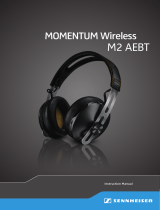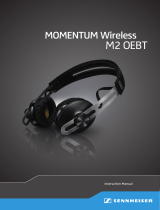Tellur TLL511441 wireless Bluetooth headphones let you enjoy music, make calls, and more without the hassle of tangled wires. With a wireless range of 10 meters, you can move around freely while staying connected to your devices. The built-in microphone allows for hands-free calling, and the easy-to-use buttons let you control your music and calls with ease. The headphones provide up to 8 hours of music playtime on a single charge, and the included carrying bag makes them easy to take with you wherever you go.
Tellur TLL511441 wireless Bluetooth headphones let you enjoy music, make calls, and more without the hassle of tangled wires. With a wireless range of 10 meters, you can move around freely while staying connected to your devices. The built-in microphone allows for hands-free calling, and the easy-to-use buttons let you control your music and calls with ease. The headphones provide up to 8 hours of music playtime on a single charge, and the included carrying bag makes them easy to take with you wherever you go.




-
 1
1
-
 2
2
-
 3
3
-
 4
4
Tellur TLL511441 wireless Bluetooth headphones let you enjoy music, make calls, and more without the hassle of tangled wires. With a wireless range of 10 meters, you can move around freely while staying connected to your devices. The built-in microphone allows for hands-free calling, and the easy-to-use buttons let you control your music and calls with ease. The headphones provide up to 8 hours of music playtime on a single charge, and the included carrying bag makes them easy to take with you wherever you go.
Ask a question and I''ll find the answer in the document
Finding information in a document is now easier with AI
Related papers
Other documents
-
Orava MBT-16GA User manual
-
Sennheiser Consumer Audio 506250 Product information
-
Sennheiser M2 AEBT User manual
-
Sennheiser HD1 Wireless User manual
-
 Headphones Momentum Wireless M2 AEBT User manual
Headphones Momentum Wireless M2 AEBT User manual
-
Sennheiser M2OEBT User manual
-
 Momentum Sales & Marketing M2 OEBT User manual
Momentum Sales & Marketing M2 OEBT User manual
-
Sony MDR-NWBT10 Owner's manual
-
Lindy BNX-100 User manual
-
Sony ZS-BTY52 Operating instructions





